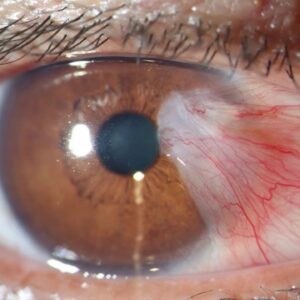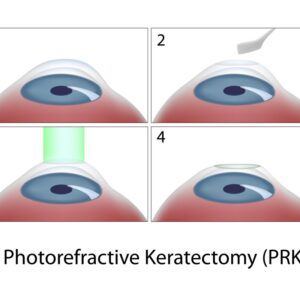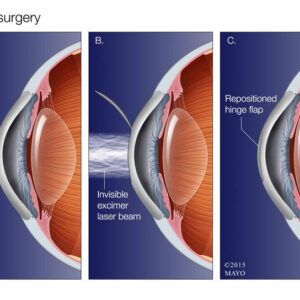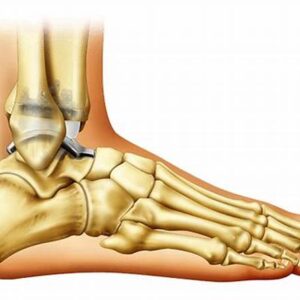2,769.00$
2,769.00$
Embark on a transformative journey with our exceptional range of medical treatments. As a leading medical tour operator, we offer a comprehensive selection of world-class treatments and procedures to address your unique healthcare needs. From advanced surgeries to cutting-edge therapies, our team of experienced professionals is dedicated to providing top-notch care and ensuring your comfort and satisfaction. Discover a new level of healthcare excellence with our tailored treatment options. Book now to start your journey towards a healthier and happier you.
An extended tummy tuck is a surgical procedure that is very similar to a traditional tummy tuck (abdominoplasty). The main difference is that an extended tummy tuck also addresses the flanks, commonly known as love handles, between the waist and hip. This additional procedure makes the extended tummy tuck more comprehensive and can provide improved contouring of the waistline.
During an extended tummy tuck, excess skin and fat are removed from the abdominal area, similar to a traditional tummy tuck. However, the incision is extended to include the flanks, allowing for the removal of excess skin and fat in that area as well. The underlying abdominal muscles may also be tightened to create a firmer and more toned appearance.
The procedure is typically performed under general anesthesia, and the length of the surgery can vary depending on the extent of the correction needed. Recovery time may be longer compared to a traditional tummy tuck due to the additional area treated.
An extended tummy tuck is suitable for individuals who have excess skin and fat not only in the abdominal area but also extending to the flanks (love handles), hips, and lower back. It is commonly recommended for patients who have experienced significant weight loss or have loose and saggy skin that does not return to its original level of elasticity.
Candidates for an extended tummy tuck may include:
Patients with Significant Weight Loss: Individuals who have lost a substantial amount of weight, either through lifestyle changes or bariatric surgery, often have excess skin and fat in multiple areas of the abdomen, flanks, and lower back. An extended tummy tuck can address these concerns and provide a more comprehensive body contouring solution.
Post-Pregnancy Patients: Women who have gone through pregnancy may experience stretched abdominal muscles and loose skin in the abdominal and flank areas. An extended tummy tuck can help tighten the muscles and remove excess skin, providing a more toned appearance.
Individuals with Excess Skin and Fat in the Flanks: Patients who have excess skin and fat in the flanks, commonly known as love handles, can benefit from an extended tummy tuck. This procedure allows for the removal of excess skin and fat in both the abdominal and flank areas, resulting in a more contoured waistline.
While an extended tummy tuck can be a suitable procedure for many individuals, it may not be appropriate for everyone. Here are some situations in which an extended tummy tuck may not be recommended:
Patients with Minimal Excess Skin or Fat: If you have minimal excess skin or fat in the abdominal and flank areas, you may not require the extensive correction provided by an extended tummy tuck. In such cases, a traditional tummy tuck or other less invasive procedures may be more suitable.
Patients with Significant Medical Conditions: Individuals with certain medical conditions, such as uncontrolled diabetes, severe heart or lung disease, or compromised immune systems, may not be suitable candidates for elective cosmetic surgery. These conditions can increase the risk of complications during and after surgery.
Smokers: Smoking can impair the healing process and increase the risk of complications. It is generally recommended to quit smoking well in advance of any surgery. If you are a smoker, your surgeon may advise you to quit or significantly reduce smoking before considering an extended tummy tuck.
Patients Planning Future Pregnancies: If you are planning to become pregnant in the near future, it may be more appropriate to postpone an extended tummy tuck. Pregnancy can stretch the abdominal muscles and skin, potentially undoing the results of the procedure. It is generally recommended to complete your family before considering extensive abdominal surgery.
Patients with Unrealistic Expectations: It is important to have realistic expectations about the outcomes of an extended tummy tuck. While the procedure can provide significant improvements in body contouring, it cannot guarantee perfection or completely eliminate all imperfections. It is important to have a thorough consultation with a qualified plastic surgeon to discuss your goals and expectations.
The advantages of an extended tummy tuck include:
Comprehensive Body Contouring: An extended tummy tuck addresses not only the abdominal area but also the flanks (love handles) and hips. This allows for a more comprehensive body contouring, resulting in a smoother and more toned appearance of the waistline.
Improved Waistline Definition: By removing excess skin and fat from the abdominal and flank areas, an extended tummy tuck can enhance the definition of the waistline. This can create a more hourglass-like figure and improve overall body proportions.
Tightening of Abdominal Muscles: During an extended tummy tuck, the underlying abdominal muscles can be tightened. This can help restore muscle tone and provide a firmer abdominal wall, especially beneficial for patients who have experienced muscle separation due to pregnancy or weight fluctuations.
Enhanced Self-Confidence: The improved body contour and waistline definition achieved through an extended tummy tuck can boost self-confidence and self-esteem. Patients often report feeling more comfortable and satisfied with their appearance after the procedure.
Satisfaction Rates: Studies have reported high satisfaction rates among patients who undergo an extended tummy tuck. Many individuals are pleased with the results, particularly in terms of the improved body shape and contour achieved.
Complications can occur with any surgical procedure, including an extended tummy tuck. It is important to be aware of the potential risks and complications associated with the surgery. Here are some complications that may arise:
Infection: Infection is a potential risk after any surgical procedure. Steps are taken to minimize the risk of infection, such as administering antibiotics and maintaining proper hygiene during and after surgery. However, there is still a small possibility of infection occurring.
Poor Wound Healing: Some individuals may experience delayed wound healing or wound separation. This can be influenced by factors such as smoking, poor blood circulation, or underlying medical conditions. Proper wound care and follow-up with the surgeon can help minimize this risk.
Bleeding: While rare, excessive bleeding can occur during or after the surgery. Surgeons take precautions to minimize bleeding during the procedure, and postoperative monitoring is done to detect any signs of excessive bleeding.
Blood Clots: Blood clots, also known as deep vein thrombosis (DVT), can occur after surgery. This risk is minimized by early mobilization, the use of compression stockings, and sometimes the administration of blood thinners.
Scarring: Scarring is an inevitable part of any surgical procedure. The incisions made during an extended tummy tuck will result in scars. However, surgeons take care to place incisions in discreet locations and provide instructions for scar management to help minimize their visibility.
Changes in Sensation: Some individuals may experience temporary or permanent changes in sensation in the abdominal and flank areas. This can include numbness, tingling, or altered sensitivity. In most cases, sensation gradually returns over time, but it may not fully normalize for everyone.
Seroma: Seroma refers to the accumulation of fluid under the skin at the surgical site. This can cause swelling and discomfort. Drains may be placed during surgery to minimize the risk of seroma formation, and if it occurs, the fluid may need to be drained through a separate procedure.
Preoperative care for an extended tummy tuck involves several important steps to ensure a successful surgery and smooth recovery. Here are some key aspects of preoperative care for an extended tummy tuck:
Consultation with a Board-Certified Plastic Surgeon: It is crucial to schedule a consultation with a board-certified plastic surgeon who specializes in extended tummy tuck procedures. During this consultation, the surgeon will evaluate your specific case, discuss your goals and expectations, and determine if you are a suitable candidate for the surgery.
Medical Evaluation and Testing: Before the surgery, you will undergo a thorough medical evaluation to assess your overall health and identify any underlying medical conditions that may affect the procedure. This evaluation may include a review of your medical history, physical examination, and possibly additional tests or consultations with specialists.
Discussion of Surgical Plan and Expectations: Your surgeon will explain the surgical plan, including the incision placement, extent of tissue removal, and expected outcomes. They will also discuss the potential risks and complications associated with the procedure. It is important to have a clear understanding of what to expect from the surgery.
Preparation Instructions: Your surgeon will provide specific instructions to follow before the surgery. These instructions may include guidelines for fasting (usually no food or drink for a certain period before surgery), medication adjustments, and guidelines for personal hygiene, such as bathing with antiseptic soap.
Smoking Cessation: If you are a smoker, it is strongly advised to quit smoking well in advance of the surgery. Smoking can impair the healing process and increase the risk of complications. Your surgeon may provide resources or recommendations to help you quit smoking.
Medication Management: Your surgeon will review your current medications and provide instructions on which medications to continue or stop before the surgery. This includes prescription medications, over-the-counter drugs, and supplements. It is important to follow these instructions to minimize the risk of complications.
Preoperative Lifestyle Adjustments: Your surgeon may recommend certain lifestyle adjustments before the surgery. This can include maintaining a healthy diet, staying hydrated, and engaging in regular exercise to optimize your overall health and prepare your body for the procedure.
Arrangements for Recovery: It is important to make arrangements for your recovery period. This may include arranging for someone to drive you home after the surgery, ensuring you have someone to assist you during the initial days of recovery, and preparing your home environment for a comfortable and smooth recovery.
Follow-Up Appointments: Your surgeon will schedule follow-up appointments to monitor your progress and address any concerns or questions you may have during the recovery period.
Postoperative care following an extended tummy tuck is crucial for a successful recovery. While the specific instructions may vary depending on the surgeon and individual circumstances, here are some general aspects of postoperative care:
Follow Surgeon’s Instructions: It is essential to closely follow the postoperative instructions provided by your surgeon. These instructions may include wound care, medication management, activity restrictions, and wearing compression garments.
Wound Care: Proper wound care is important to promote healing and minimize the risk of infection. Your surgeon will provide specific instructions on how to clean and care for your incisions. This may involve keeping the incision site clean and dry, applying prescribed ointments or dressings, and avoiding activities that could strain the incisions.
Pain Management: Pain and discomfort are common after an extended tummy tuck. Your surgeon may prescribe pain medication or recommend over-the-counter pain relievers to manage any discomfort. It is important to take the medication as directed and report any severe or persistent pain to your surgeon.
Compression Garments: Wearing compression garments is often recommended after an extended tummy tuck. These garments provide support, reduce swelling, and help shape the newly contoured abdomen. Follow your surgeon’s instructions regarding the duration and frequency of wearing compression garments.
Activity Restrictions: Your surgeon will provide guidelines on activity restrictions during the initial recovery period. This may include avoiding strenuous activities, heavy lifting, and intense exercise for a certain period. Gradually increasing your activity level as advised by your surgeon will help prevent complications and promote healing.
Healthy Lifestyle: Maintaining a healthy lifestyle can contribute to a smoother recovery. This includes eating a balanced diet, staying hydrated, and avoiding smoking and excessive alcohol consumption. Proper nutrition and hydration support the healing process and help optimize your overall well-being.
Follow-Up Appointments: Your surgeon will schedule follow-up appointments to monitor your progress and remove any sutures or drains if necessary. These appointments are essential for your surgeon to assess your healing and address any concerns or questions you may have.
| Country | |
|---|---|
| City | |
| Hotel | |
| Visa | |
| Translator | |
| Transfer | |
| Stay at Hospital | |
| Language | |
| Insurance | |
| Stay at Hotel | |
| City Tour |
Only logged in customers who have purchased this product may leave a review.






Reviews
There are no reviews yet.